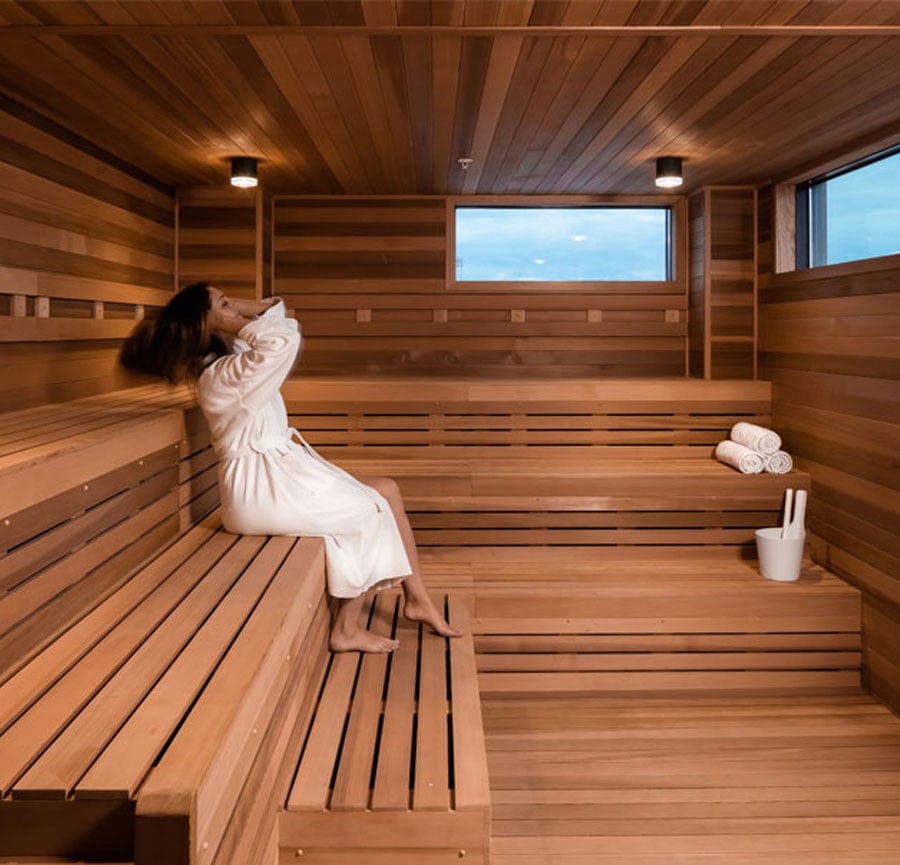Our Traditional Sauna Diaries
Our Traditional Sauna Diaries
Blog Article
8 Easy Facts About Traditional Sauna Shown
Table of ContentsGetting My Traditional Sauna To WorkThe Single Strategy To Use For Traditional SaunaSome Known Details About Traditional Sauna The Ultimate Guide To Traditional SaunaSome Known Details About Traditional Sauna
Many of the weight lost in a sauna is water loss and is re-gained upon rehydrating. Nevertheless, undoubtedly sauna can be an integral part of a healthy and balanced weight management program. To take a look at the differences in between typical and IR saunas, I will separate these right into verifiable, theoretical, and produced distinctions.Therefore, the hottest factor in the saunawhich goes to the ceiling straight over the sauna heateris commonly in between 185 and 190 F. Claims that a conventional sauna surpasses 200 F is simply not real and not suitable for electric saunas offered in the US. The temperature level for a far-infrared sauna is generally set in between 120 and 140 F; nonetheless, unlike the conventional sauna, the objective in and IR space is not to attain a heat.
Due to this, the temperature difference is nearly pointless, because extreme sweating leads to both sauna types, however the method of heating up the body is various. In an IR sauna the bather will certainly really feel warm and will certainly sweat a lot, but at a lot reduced temperature levels (Traditional Sauna). Therefore, if the objective is to invest longer amount of times in the sauna, the IR sauna is a good option
When a standard sauna has actually been effectively heated, the sauna walls are cozy, the air temperature level has actually accomplished established temperature level and the rocks are very warmed. As a fascinating side note, the heated walls and the rocks are releasing far-infrared heat, integrated with the heated air, to develop an "wrapping up heat".
Some Ideas on Traditional Sauna You Need To Know

When the heat is accomplished, the aspects cycle on and off to preserve the heat. Many standard sauna customers enjoy putting water over the rocks to produce steam to elevate sauna humidity levels. The benefits of putting water over the rocks include: making the room more comfortable, moistening the nasal flows, and enabling the use of aromatherapy by blending crucial oils with the water.

When the power enters the body, it triggers the body temperature level to increase and inevitably results in sweat. In an infrared sauna it is necessary for the emitters/heaters to continue to be image source on virtually frequently. Considering that there is no mass of rocks to retain warm, the sauna will cool down if the emitters turned off.
As pointed out over, the sauna bather in an infrared room desires to position himself in front of running emitters to obtain maximum take advantage of the warmth. The heating time for both areas can be very different, relying on how the spaces are used. For a typical sauna, a bather should enable 30-40 mins for the room to accomplish a wanted temperature and to appropriately pre-heat the rocks.
The Definitive Guide to Traditional Sauna
A well built sauna will commonly attain a temperature of 150-160 F in regarding 30-40 mins. For hotter temperature levels, the area might need to heat for a longer duration.

Standard saunas have a tendency to be bigger (therefore use even more electricity) than infrared saunas, although traditional saunas are absolutely offered in one and 2 person dimensions. For a two-person traditional sauna, 5x6 or 5x7 size is most preferred. The top bench can comfortably seat 2 or 3 people useful source and is also long enough to relax during the sauna session.
Little Known Facts About Traditional Sauna.
The typical price per kWH of electrical power in the U.S. is approximately $0.11, so a 4.5 kW heating unit will certainly set you back approximately $.50 to compete one hour, if the heating unit runs continuously for one hour. Commonly a sauna heater will run for 75% of the first hour and 50% of subsequent hours on considering that the components cycle once the established temperature level is attained.

There is a rarely talked about difference in the social experience between the two areas. While our society has shed several of the social advantage of the conventional sauna experience, it can be very socially fulfilling (Traditional Sauna). From household time in the sauna, to heart-felt conversations with substantial others, to sauna partiesthe standard sauna experience can lead to intimate mingling
4 Easy Facts About Traditional Sauna Described
Most higher end infrared spaces consist of tinted light treatment, audio systems and full-glass fronts.
Report this page